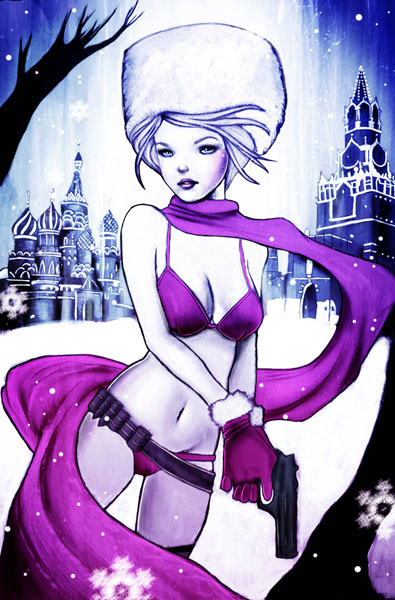| Quote: |
| They caught me reading from a banned book. All I can remember from it was one line – “The state calls its own violence law, but that of the individual crime”. |

This is the second volume of collected stories featuring Judge Anderson taken from 2000AD and the Judge Dredd Megazine. All except one was written by Alan Grant (the exception being a collaboration between Grant and long time writing partner John Wagner) and features three longer stories with a number of short tales interspersed among them. There are a number of artists involved including Arthur Ranson, Steve Sampson, Kevin Walker, Ian Gibson among others.
The first of the longer stories is called Shamballa and sees Anderson and academy colleague, Rickard, travelling to Tibet with two East-Meg 2 psi operatives to investigate the source of a worldwide spate of psychic visions of mythic creatures that are causing death and destruction where they appear. They end up travelling to the region formerly known as Tibet to track down a forgotten race of people with extraordinary psi abilities. The art on this story was by the great Arthur Ranson.
After a number of stories that slowly erode Anderson’s faith in the justice system she eventually cracks and attacks a particularly brutal judge. In the second of the long stories, Childhood’s End, she is sent on a mission to Mars to cool off. On the Cydonian plane, the head monument has opened a portal. Anderson is one of a number of assembled experts who make the expedition into the structure. While inside she must confront a deadly enemy of old and the return of an ancient race determined to wipe out humanity.
The third long story, Postcards from the Edge continues on from the last one and sees Anderson, having resigned as a judge, bumming round the inhabited worlds of the galaxy looking to find herself. This walkabout storyline is the most disjointed, having several different artists contributing to it, and with individual stories of variable quality and interest. Having said that I like the chapters with the distinctive art of Steve Sampson which are good to look at even if they are not necessarily good to read.
The beauty of this volume is that it allows an alternative look at the judges and the justice system of Mega-City. The sometimes brutal tactics of the street judge are questioned here by an increasingly doubtful Anderson as she struggles to get over the suicide of her friend, the empath Judge Corey, and assimilate some the spiritual experiences she goes through in this book and the philosophical questions they raise. Taken all together it is a worthwhile addition to the library even though some of the standalone stories and parts of Postcards from the Edge are not quite as good as the rest.



 Currently: Watching Game of Thrones ]
Currently: Watching Game of Thrones ]
 Currently: Listening to Spiritualized ]
Currently: Listening to Spiritualized ]



